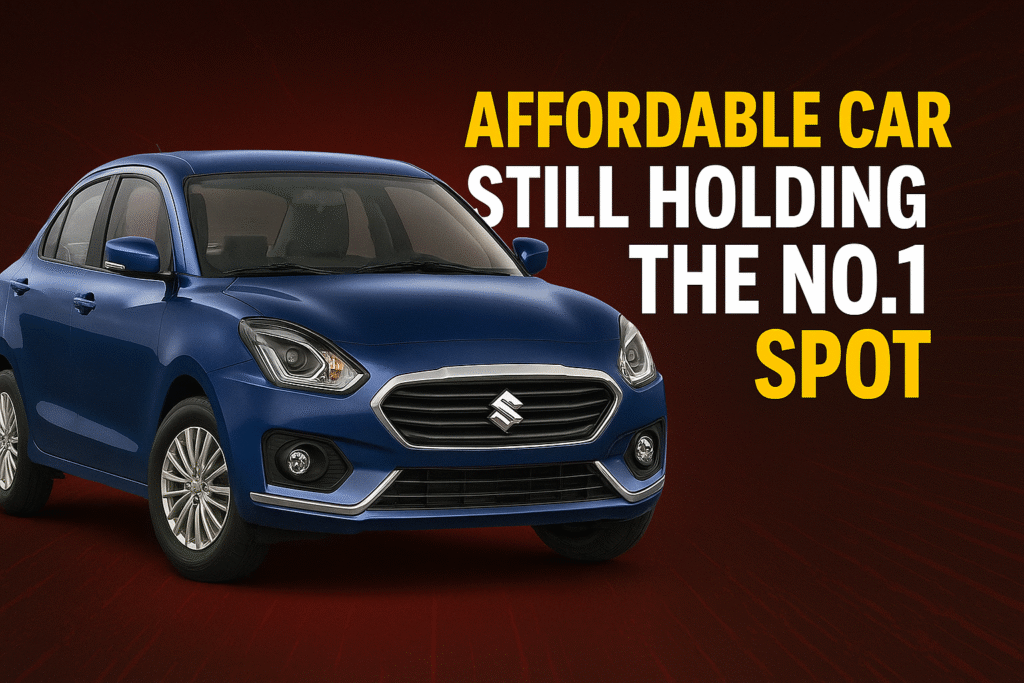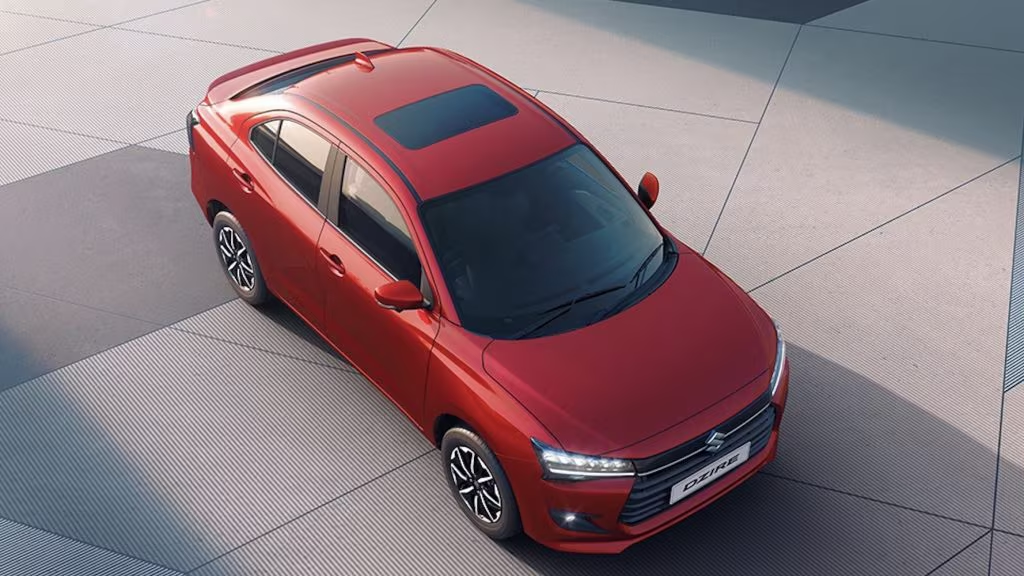
The Indian automobile market, known for its dynamic competition, has witnessed yet another compelling chapter with Maruti Suzuki’s Dzire maintaining its stronghold as the top-selling car. Despite fierce competition from industry giants like Tata Motors and Hyundai, the Dzire has proven to be a tough contender, leaving its competitors grappling to claim the coveted number one spot. Let’s delve into how the Dzire has managed to keep its edge and what it signifies for the automobile industry in India.
Consistent Performance and Consumer Trust
The Maruti Dzire, a compact sedan that combines affordability, comfort, and reliability, has been a household name in India for years. Its appeal lies in its ability to cater to a wide spectrum of consumers, from first-time car buyers to families seeking a budget-friendly vehicle with ample features. The car’s consistent performance on Indian roads, combined with Maruti Suzuki’s extensive service network, has solidified its position as a consumer favorite.
In recent months, the Dzire has outperformed rivals in terms of sales figures. According to industry reports, it has consistently maintained its spot as the best-selling car, leaving behind popular models from Tata Motors and Hyundai, such as the Tata Nexon and Hyundai Creta. The Dzire’s ability to stay relevant in a market characterized by shifting consumer preferences and increasing competition is a testament to its enduring appeal.
The Price Advantage
One of the key reasons for the Dzire’s dominance is its price positioning. In a price-sensitive market like India, the Dzire offers an attractive package of features and performance at a competitive price point. The base model’s affordability has made it accessible to a large section of the population, while the higher variants cater to those looking for premium features without breaking the bank.
Tata Motors and Hyundai, despite their strong product lineups, have found it challenging to match the Dzire’s value proposition. Models like the Tata Altroz and Hyundai Aura, although well-received, often fall short in terms of volume sales due to higher pricing or limited variants.
Subheading: Feature-Packed Offering
The Maruti Dzire is not just about affordability; it also boasts an impressive array of features that enhance the driving experience. From a fuel-efficient engine to a comfortable and spacious interior, the Dzire delivers on multiple fronts. Its latest model comes equipped with advanced technology such as a touchscreen infotainment system, Android Auto, Apple CarPlay, and safety features including ABS with EBD, dual airbags, and reverse parking sensors.
These features make the Dzire a well-rounded offering, appealing to tech-savvy millennials and families alike. The sedan’s mileage, often a decisive factor for Indian buyers, further adds to its allure. With petrol and CNG variants that deliver exceptional fuel efficiency, the Dzire addresses the rising fuel costs effectively.
Moreover, the Dzire’s design has evolved over the years, striking a balance between elegance and practicality. Its sleek exterior and ergonomic interior design ensure a premium feel, making it a compelling choice for buyers seeking style and substance.
The Competitive Landscape
While the Dzire continues to shine, it’s important to note the efforts by Tata Motors and Hyundai to challenge its dominance. Tata’s Nexon, a compact SUV, has been gaining traction thanks to its robust build quality, advanced safety features, and electric variant. Similarly, Hyundai’s Creta and Venue have carved a niche for themselves in the SUV segment with their stylish designs and feature-rich offerings.
Despite these advancements, the Dzire’s strong brand loyalty and unmatched network support have kept it ahead. Maruti Suzuki’s focus on customer satisfaction, affordable maintenance, and easy availability of spare parts has been instrumental in retaining its customer base. The company’s strategic marketing campaigns and attractive financing options have further bolstered the Dzire’s appeal.
Subheading: Impact on Tata Motors and Hyundai
The success of the Dzire poses a significant challenge for Tata Motors and Hyundai, both of whom have been investing heavily in innovation and expanding their product portfolios. Tata Motors, in particular, has been focusing on electric vehicles (EVs) as a long-term strategy, while Hyundai has been enhancing its SUV lineup to cater to changing consumer preferences.
However, the dominance of the Dzire highlights the importance of understanding and addressing the core needs of Indian consumers. While premium features and futuristic designs attract a certain segment, affordability, reliability, and after-sales service remain key drivers for mass-market success.
To compete effectively, Tata Motors and Hyundai will need to enhance their value propositions. Offering competitive pricing, expanding their service networks, and introducing models that resonate with the needs of middle-class buyers could be crucial steps in closing the gap with the Dzire.
Looking Ahead: What’s Next for the Dzire?

As the automotive landscape evolves, Maruti Suzuki will need to innovate to maintain the Dzire’s leading position. With increasing competition from emerging EVs and hybrid models, the company must consider integrating green technology into its lineup. Additionally, addressing the growing demand for connectivity features and autonomous driving technology could help the Dzire stay ahead of the curve.
Maruti Suzuki’s investment in research and development, along with its commitment to sustainability, positions it well to tackle these challenges. The introduction of hybrid and electric variants of the Dzire could not only strengthen its market position but also align with India’s push for eco-friendly mobility solutions.
Subheading: Maruti’s Strategic Vision
Maruti Suzuki’s success with the Dzire is a reflection of the company’s broader strategic vision. By focusing on consumer-centric design, efficient manufacturing processes, and a robust distribution network, Maruti has created a blueprint for success in the competitive automobile market.
The company’s ability to anticipate market trends and adapt to changing consumer needs has been a key factor in the Dzire’s sustained success. For instance, recognizing the rising demand for compact sedans, Maruti ensured that the Dzire offered ample interior space without compromising on external dimensions. Similarly, the inclusion of advanced safety features and smart technology reflects the company’s commitment to staying ahead of the curve.
The Role of Marketing and Brand Loyalty
Effective marketing has played a significant role in cementing the Dzire’s position as a market leader. Maruti Suzuki’s advertising campaigns have consistently highlighted the Dzire’s value proposition, resonating with a diverse audience. The emphasis on family-oriented themes, reliability, and affordability has struck a chord with Indian consumers.
Brand loyalty is another critical factor. Over the years, Maruti Suzuki has built a strong relationship with its customers through reliable products and excellent after-sales service. This loyalty translates into repeat purchases and positive word-of-mouth, further reinforcing the Dzire’s popularity.
Subheading: Challenges and Opportunities
Despite its success, the Dzire faces several challenges in the coming years. The shift towards electric and hybrid vehicles, increasing competition from global automakers, and changing consumer preferences are some of the factors that could impact its market position.
However, these challenges also present opportunities for growth and innovation. By embracing new technologies and expanding its product portfolio, Maruti Suzuki can continue to lead the way in the Indian automobile industry. The company’s focus on sustainability and innovation, coupled with its strong foundation, positions it well to navigate these changes.
In conclusion, the Maruti Dzire’s continued reign as the best-selling car in India is a testament to its exceptional value, reliability, and appeal. As it adapts to an evolving market, the Dzire is poised to remain a key player in shaping the future of mobility in India.

